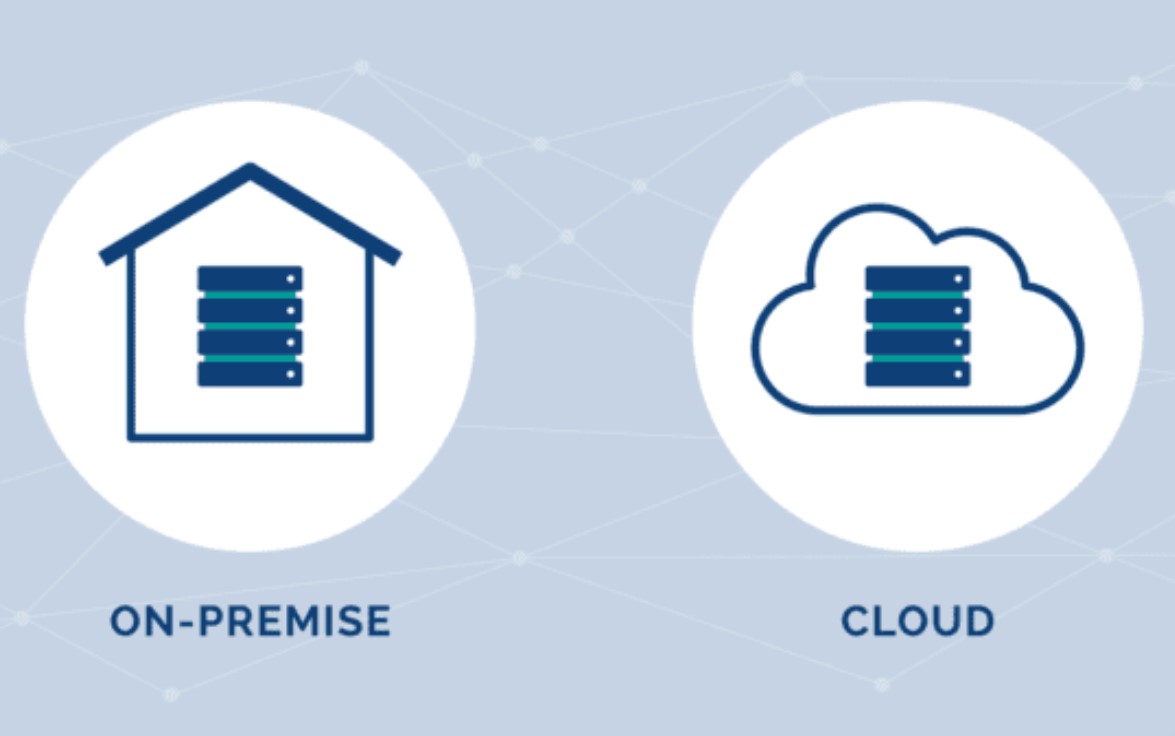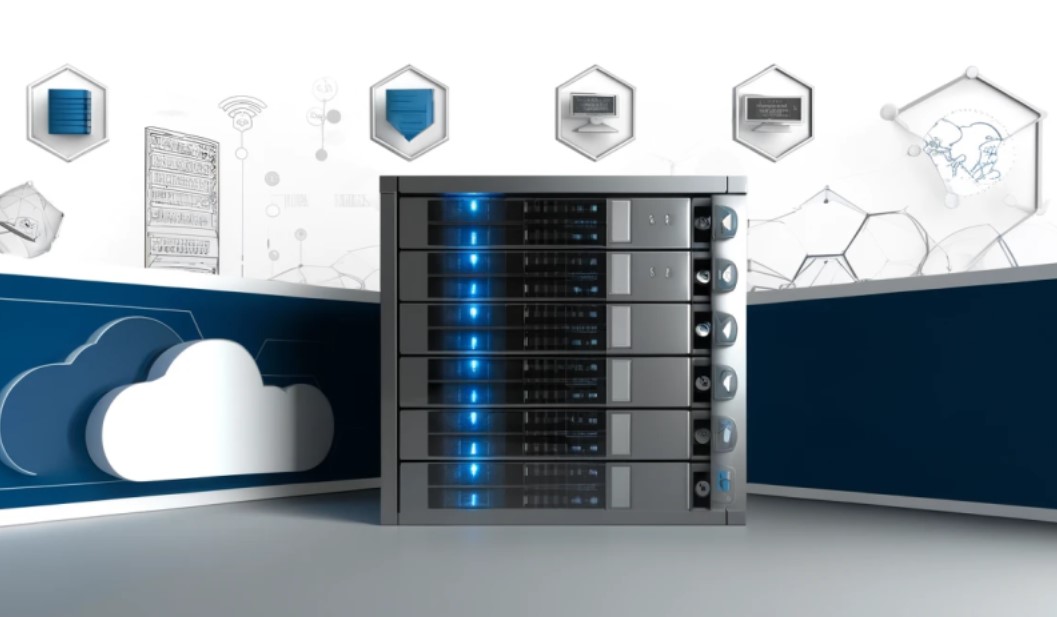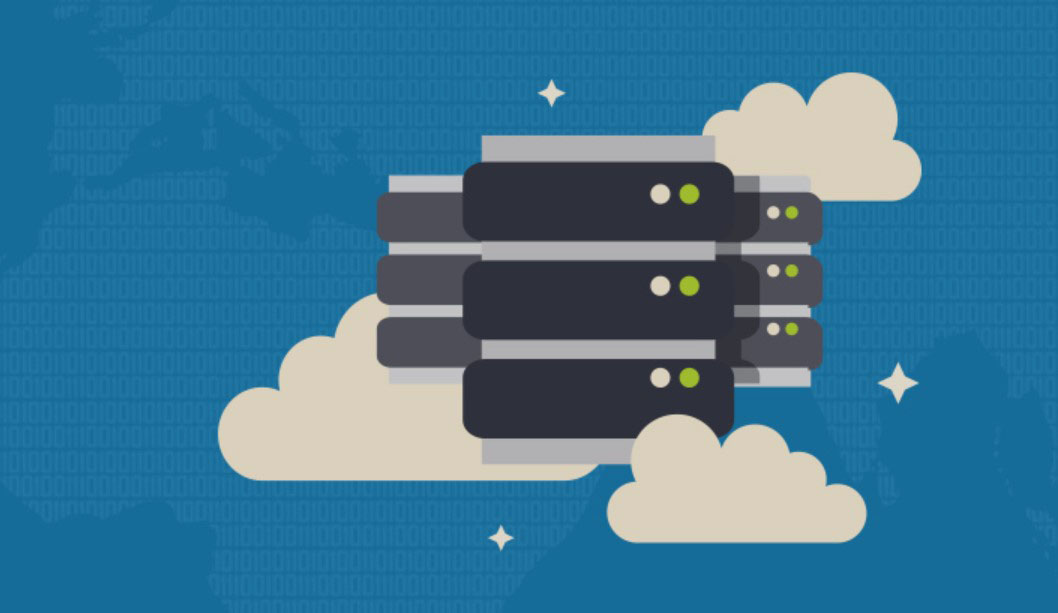
Cloud-based computing has revolutionized the way modern businesses operate, providing unprecedented flexibility, scalability, and efficiency. In this comprehensive guide, we will explore how cloud computing is transforming businesses, delve into its benefits, and review top cloud-based products that are leading the change. Let’s dive in!
Understanding Cloud-Based Computing

What is Cloud-Based Computing?
Cloud-based computing, often referred to as cloud computing, is the delivery of various computing services over the internet, or “the cloud.” These services include storage, processing power, databases, networking, software, and more. Instead of owning and maintaining physical servers and data centers, businesses can rent access to these resources from a cloud service provider. This model offers several advantages, such as cost savings, scalability, flexibility, and improved performance.
Key Components of Cloud-Based Computing
- Infrastructure as a Service (IaaS): IaaS provides virtualized computing resources over the internet. This includes virtual machines, storage, and networks. With IaaS, businesses can rent infrastructure on a pay-as-you-go basis, scaling resources up or down as needed. Popular IaaS providers include Amazon Web Services (AWS), Microsoft Azure, and Google Cloud Platform (GCP).
- Platform as a Service (PaaS): PaaS offers a platform allowing customers to develop, run, and manage applications without dealing with the underlying infrastructure. PaaS includes tools and services for application development, such as databases, middleware, and development frameworks. This allows developers to focus on writing code rather than managing hardware and software layers. Examples of PaaS providers are Microsoft Azure App Services, Google App Engine, and Heroku.
- Software as a Service (SaaS): SaaS delivers software applications over the internet, on a subscription basis. Users can access these applications via a web browser, without needing to install or maintain them locally. SaaS is widely used for various business applications, such as customer relationship management (CRM), human resources management (HRM), and enterprise resource planning (ERP). Popular SaaS providers include Salesforce, Microsoft Office 365, and Google Workspace.
Types of Cloud Deployments
- Public Cloud: Public clouds are operated by third-party cloud service providers, offering their resources over the internet. These resources are shared among multiple customers, providing economies of scale and cost savings. Examples of public cloud providers are AWS, Microsoft Azure, and GCP.
- Private Cloud: A private cloud is dedicated to a single organization. It can be hosted on-premises or by a third-party provider. Private clouds offer enhanced security and control, making them suitable for businesses with specific compliance or data privacy requirements. Companies like VMware and IBM offer private cloud solutions.
- Hybrid Cloud: Hybrid clouds combine public and private clouds, allowing data and applications to be shared between them. This model provides greater flexibility, enabling businesses to optimize their IT infrastructure by utilizing the best features of both public and private clouds. Hybrid cloud solutions are offered by providers like Microsoft Azure and IBM.
- Multi-Cloud: Multi-cloud refers to the use of multiple cloud services from different providers. This approach helps businesses avoid vendor lock-in, improve redundancy, and optimize performance by choosing the best services from each provider. Organizations can manage their multi-cloud environments using tools like Kubernetes and Terraform.
How Cloud-Based Computing Works
Cloud-based computing relies on virtualization technology to create virtual instances of physical hardware. Here’s a breakdown of how it works:
- Virtualization: Cloud providers use virtualization to create virtual machines (VMs) that run on physical servers. Each VM operates as an independent unit, with its own operating system and applications. This allows multiple VMs to share the same physical hardware, maximizing resource utilization.
- Resource Pooling: Resources such as CPU, memory, and storage are pooled together and dynamically allocated to VMs based on demand. This ensures that resources are used efficiently and can be scaled up or down as needed.
- Network Connectivity: Cloud providers maintain robust network infrastructures to ensure reliable connectivity and low latency. They often have data centers located around the world, enabling them to deliver services from locations closer to their customers, reducing latency and improving performance.
- Automated Management: Cloud platforms use sophisticated management software to automate the deployment, monitoring, and scaling of resources. This automation reduces the administrative burden on IT teams and ensures that applications run smoothly.
- Self-Service Provisioning: Customers can provision and manage their cloud resources through a web-based dashboard or API. This self-service model allows businesses to quickly deploy new services, scale existing ones, and monitor their usage and performance.
The Future of Cloud-Based Computing
Cloud-based computing is continuously evolving, with several trends shaping its future:
- Edge Computing: Edge computing involves processing data closer to the source, reducing latency and improving performance. This approach is particularly useful for applications that require real-time processing, such as IoT devices and autonomous vehicles.
- Artificial Intelligence and Machine Learning: Cloud platforms are increasingly integrating AI and machine learning capabilities, enabling businesses to leverage these technologies without the need for specialized hardware or expertise. This trend is expected to drive innovation and unlock new use cases across various industries.
- Serverless Computing: Serverless computing allows developers to build and run applications without managing the underlying infrastructure. This model abstracts away server management, enabling developers to focus on writing code and improving efficiency. Popular serverless platforms include AWS Lambda, Azure Functions, and Google Cloud Functions.
- Hybrid and Multi-Cloud Strategies: Businesses are increasingly adopting hybrid and multi-cloud strategies to optimize their IT environments. These approaches provide greater flexibility, resilience, and cost savings by allowing businesses to leverage the strengths of multiple cloud providers.
- Enhanced Security and Compliance: As cyber threats continue to evolve, cloud providers are investing in advanced security measures and compliance certifications. This focus on security will help businesses protect their data and meet regulatory requirements.
Real-World Examples of Cloud-Based Computing Products

1. Amazon Web Services (AWS)
Features:
- Extensive range of cloud services
- Highly scalable and reliable infrastructure
- Advanced security features
- Global data center footprint
Pros:
- Wide array of services and tools
- High availability and reliability
- Strong security and compliance
Cons:
- Can be complex for beginners
- Potentially high costs for extensive usage
Price: Pay-as-you-go pricing model, with free tier options available
2. Microsoft Azure
Features:
- Integrated cloud services and solutions
- Strong hybrid cloud capabilities
- AI and machine learning tools
- Extensive compliance coverage
Pros:
- Seamless integration with Microsoft products
- Comprehensive toolset for developers
- Robust security and compliance
Cons:
- Steeper learning curve for non-Microsoft users
- Pricing can be complex
Price: Pay-as-you-go pricing, with various plans and free tier options
3. Google Cloud Platform (GCP)
Features:
- Powerful data analytics and machine learning tools
- Global network infrastructure
- Strong support for open source technologies
- Advanced security measures
Pros:
- Excellent data and analytics capabilities
- Strong performance and reliability
- Flexible and scalable solutions
Cons:
- Limited enterprise adoption compared to AWS and Azure
- Can be expensive for large-scale deployments
Price: Flexible pricing options with free tier and trial credits available
4. IBM Cloud
Features:
- Hybrid cloud solutions
- Advanced AI and quantum computing capabilities
- Secure and compliant infrastructure
- Extensive industry-specific solutions
Pros:
- Strong focus on AI and machine learning
- Robust hybrid cloud offerings
- High security standards
Cons:
- Limited ecosystem compared to AWS and Azure
- Complex pricing structure
Price: Various pricing plans based on services and usage
5. Oracle Cloud
Features:
- Enterprise-grade cloud infrastructure
- Integrated suite of applications and services
- High-performance computing capabilities
- Comprehensive security and compliance
Pros:
- Strong focus on enterprise solutions
- High performance and reliability
- Extensive security features
Cons:
- Higher costs for enterprise solutions
- Less flexible compared to some competitors
Price: Subscription-based pricing with various service levels
Comparison Table of Cloud-Based Computing Products
| Provider | Use Case | Pros | Cons | Price | Features |
|---|---|---|---|---|---|
| AWS | Versatile use cases | Wide array of services, high availability | Complex for beginners, high costs for extensive usage | Pay-as-you-go, free tier | Scalable services, global infrastructure, strong security |
| Microsoft Azure | Enterprise integration | Seamless Microsoft integration, robust tools | Steeper learning curve, complex pricing | Pay-as-you-go, free tier | Hybrid cloud, AI tools, extensive compliance |
| Google Cloud | Data analytics | Excellent analytics, strong performance | Limited enterprise adoption, expensive | Flexible pricing, free tier | Data and analytics, global network, open source support |
| IBM Cloud | AI and hybrid solutions | Strong AI capabilities, robust hybrid cloud | Limited ecosystem, complex pricing | Various plans | AI and quantum computing, secure infrastructure |
| Oracle Cloud | Enterprise solutions | High performance, enterprise-grade security | Higher costs, less flexible | Subscription-based | Integrated applications, high-performance computing |
Benefits of Cloud-Based Computing Products

Amazon Web Services (AWS)
Scalability and Flexibility: AWS offers a highly scalable and flexible infrastructure that can easily adapt to the needs of any business, whether it’s a startup or a large enterprise. The wide range of services ensures that businesses can quickly deploy and manage applications, enabling rapid innovation.
Security and Compliance: AWS provides advanced security features and compliance certifications, ensuring that businesses can meet regulatory requirements and protect their data.
Microsoft Azure
Integration with Microsoft Products: Azure’s seamless integration with popular Microsoft products like Office 365 and Dynamics 365 makes it an excellent choice for businesses already using Microsoft technologies. This integration simplifies the migration to the cloud and enhances productivity.
Comprehensive Toolset: Azure offers a comprehensive toolset for developers, including AI, machine learning, and DevOps tools, enabling businesses to build and deploy cutting-edge applications.
Google Cloud Platform (GCP)
Data and Analytics Capabilities: GCP excels in data analytics and machine learning, providing powerful tools for businesses to gain insights and drive innovation. The platform’s global infrastructure ensures reliable performance and low latency.
Support for Open Source: GCP’s strong support for open source technologies allows businesses to leverage existing tools and frameworks, promoting flexibility and innovation.
IBM Cloud
AI and Quantum Computing: IBM Cloud’s focus on AI and quantum computing provides businesses with advanced capabilities to solve complex problems and drive innovation. The platform’s hybrid cloud solutions enable seamless integration with on-premises systems.
Industry-Specific Solutions: IBM Cloud offers tailored solutions for various industries, ensuring that businesses can meet specific regulatory and operational requirements.
Oracle Cloud
Enterprise-Grade Performance: Oracle Cloud’s enterprise-grade infrastructure ensures high performance and reliability, making it an excellent choice for mission-critical applications. The platform’s comprehensive security features protect sensitive data and ensure compliance.
Integrated Suite of Applications: Oracle Cloud provides a fully integrated suite of applications and services, enabling businesses to streamline operations and improve efficiency.
How to Buy Cloud-Based Computing Services
Purchasing cloud-based computing services is a straightforward process. Follow these steps:
- Visit the Provider’s Website:
- Amazon Web Services (AWS)
- Microsoft Azure
- Google Cloud Platform (GCP)
- IBM Cloud
- Oracle Cloud
- Choose a Plan:
- Compare the features and prices of different plans.
- Select a plan that suits your needs and budget.
- Sign Up:
- Create an account on the provider’s website.
- Provide the necessary details and complete the registration process.
- Make Payment:
- Enter your payment information.
- Complete the purchase and activate your cloud services.
- Set Up Your Cloud Environment:
- Follow the provider’s setup instructions to configure your cloud environment.
- Deploy applications and migrate your data as needed.
Use Cases and Solutions
E-commerce Websites
Problem: E-commerce websites need to handle fluctuating traffic and ensure fast load times to enhance user experience and drive sales.
Solution: Cloud-based computing provides scalable resources to handle traffic spikes and ensure high availability, improving website performance and user satisfaction.
Business Applications
Problem: Businesses require secure and reliable infrastructure to run critical applications and store sensitive data.
Solution: Cloud-based computing offers robust security features and compliance certifications, ensuring that business applications run smoothly and data is protected.
Data Analytics
Problem: Businesses need powerful tools to analyze large volumes of data and gain insights for decision-making.
Solution: Cloud-based computing platforms like GCP provide advanced data analytics and machine learning tools, enabling businesses to extract valuable insights from their data.
FAQs
1. What is cloud-based computing?
Answer: Cloud-based computing refers to the delivery of computing services, such as servers, storage, databases, networking, and software, over the internet. It allows businesses to rent computing resources from cloud providers instead of owning physical infrastructure.
2. How does cloud-based computing benefit businesses?
Answer: Cloud-based computing benefits businesses by providing scalability, cost efficiency, accessibility, flexibility, and enhanced security. It allows businesses to scale resources as needed, reduce operational costs, and access data and applications from anywhere.
3. Which cloud-based computing provider is the best?
Answer: The best cloud-based computing provider depends on your specific needs and use case. AWS, Microsoft Azure, Google Cloud Platform, IBM Cloud, and Oracle Cloud are all top providers, each offering unique features and benefits.
4. How do I choose the right cloud-based computing plan?
Answer: To choose the right cloud-based computing plan, compare the features, pricing, and scalability options of different providers. Consider your business requirements, such as data storage, security, and application performance, to select a plan that meets your needs.
5. Can I switch cloud providers if I’m not satisfied?
Answer: Yes, you can switch cloud providers if you’re not satisfied with your current provider. Most cloud platforms offer migration tools and services to help you transfer your data and applications to a new provider seamlessly.
By understanding how cloud-based computing is transforming modern businesses, you can leverage its benefits to enhance your operations, drive innovation, and stay competitive in today’s digital landscape. Choose the right cloud provider and plan that aligns with your business needs to maximize the advantages of cloud computing.





